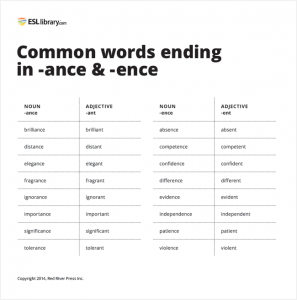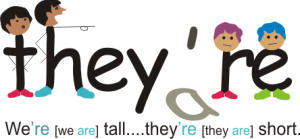Words ending in –ance and –ence
These two endings are both used to make nouns from verbs (e.g. performance from perform) or nouns from adjectives (e.g. intelligence from intelligent).
In general, you’ll need to remember how to spell these words (or else check their spelling in a dictionary). Here are some tips to help you remember:
Words ending in -ance
- If the word is formed from a verb that ends in -y, -ure, or -ear, then the ending will be spelled -ance. For example: alliance (from ally), endurance (from endure), or appearance (from appear)
- If the main part of the word (i.e. the bit before the ending) ends in a ‘hard’ c (pronounced like the c in cab) or a ‘hard’ g (pronounced like the g in game), then the ending will be spelled -ance. For example: elegance or significance.
- If the noun is related to a verb ending in -ate, then the ending is likely to be -ance, e.g.tolerance (from tolerate)
Here are some common nouns ending in -ance:
clearance; guidance; acceptance; relevance; ignorance; importance; resemblance; instance; allowance; insurance; distance; substance; maintenance; appliance; disturbance; assistance; nuisance; balance; fragrance; circumstance; grievance; dominance; attendance.
Words ending in -ence
- If the word is formed from a verb ending in -ere, then the ending will be spelled -ence. For example: reverence (from revere), adherence (from adhere), or coherence (from cohere).
Note that the word perseverance is an exception to this rule!
- If the main part of the word ends in a soft c (pronounced like the c in cell) or a soft g(pronounced like the g in gin), then the ending will be -ence. For example: adolescence oremergence.
Note that the word vengeance is an exception to this rule!
Here are some common nouns ending in -ence:
consequence; absence; convenience; preference; influence; presence; innocence; difference; recurrence; audience; reference; essence; evidence; affluence; insistence; sentence; coincidence; sequence; existence; silence; conference; experience; patience; confidence.





